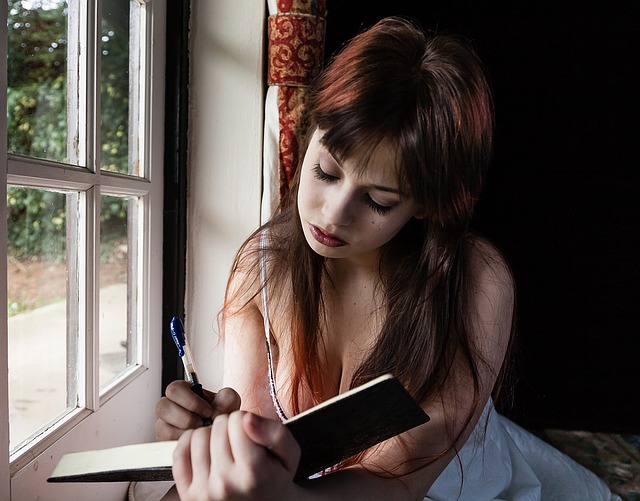Gwynn Scheltema
Two of my grandchildren spent a week with me this month and as they always do, asked me to retell a host of family stories – funny ones, scary ones and ones where they could see their parents as children and make the genetic connection to their own character traits.
Then they asked me to write them down.

I realized at that moment, that when I was gone, many of the stories would go with me. But were they important enough, significant enough to make a permanent record? What did they matter? Why are family stories important?
Yukon Elder Angela Sidney once said in an interview for the Toronto Star with Dan Yashinsky, “I have no money to leave my grandchildren. My stories are my wealth.”
Ordinary People
When I was a young woman, it seemed to me that biographies and autobiographies were the only source of “life stories.” And for a life story to make it into book form, the subject life had to be a famous one: great achievement, great adversity, great discovery and such. These days, memoirs abound. They are still stories of great achievement, great adversity and great discovery, but they are stories from “ordinary” people. The kind of people I might know. The kind of lives I can recognize.
What I like about this trend is the underlying inference that everybody’s life matters. That we all have something to offer. And in each life I read about I find echoes of my own. This connection through story can, at different times, inspire, comfort, educate, amuse, awe or humble me. It’s all good.
That’s what the grandkids were really asking me for…echoes from the past through which they could find connection and comfort, inspiration, amusement, awe…
The Power of Story
The International Storytelling Centre (ISC) based in Tennessee believes that story is the most effective way to communicate both with others and with ourselves. ISC began a movement to revive oral story telling over forty years ago. The cornerstone of their belief is that “People crave, remember and honour stories.” They say, “We are an organization dedicated to inspiring and empowering people across the world to accomplish goals and make a difference by discovering, capturing, and sharing their stories.”

Many cultures have a rich and active oral storytelling tradition, and increasingly oral storytelling groups are forming the world over. Each year, March 20 marks World Storytelling Day, a global celebration of the art of oral storytelling. World Storytelling Day began in Sweden in 1991 and Canada joined the event in 2003.
On this day, people tell and listen to stories in many languages and at as many places as possible, during the same day and night. This event has been important in forging links between storytellers and in drawing attention to the art of storytelling.
Isak Dinesen said, “To be a person is to have a story to tell.” We all have them, me included.
What stories should I tell?
When I asked the kids what stories I should write down, they fired off a verbal list: How my husband and I met. The story of how and where he proposed. They wanted to know what sports I played, hobbies I had, places I’d lived, what I did in my spare time…
They wanted to hear tales of my children – their parents- as children.
They wanted scariest moments, most embarrassing moments, proudest moments; favourite pets, favourite school subjects. Had I ever been arrested! (No!) Had any family members ever been murdered! (Yes!)

They wanted details about family members who had served in wars, been in concentration camps, been famous or notorious.
Why had I come to Canada? Who were my grandparents?
They left me with a written list of over 50 topics – “To get me started,” they said.
So now what?
So, now I’m determined to throw off any thoughts of “my stories aren’t worth recording.” I’m challenging myself to complete their list. The stories don’t have to be literary. They don’t have to be long. I just have to tell them (on the page) as only I can tell them.

How about you? Do you have stories that only you can tell? Write them down.
Here are some questions to get you started from the genealogy site fortyandlogan.weebly.com













 Sadly, I have several beautiful journals—handmade paper, illustrated, filled with wise sayings, beautifully bound—and I will likely never write in them. I’m afraid I’ll “spoil” them, like everything I write in them needs to be perfect. Silly, maybe, but that’s me. Many writers are inspired by beautiful paper or pens, or illustrations and bindings. Just not me.
Sadly, I have several beautiful journals—handmade paper, illustrated, filled with wise sayings, beautifully bound—and I will likely never write in them. I’m afraid I’ll “spoil” them, like everything I write in them needs to be perfect. Silly, maybe, but that’s me. Many writers are inspired by beautiful paper or pens, or illustrations and bindings. Just not me. I tried various sizes, lined and unlined, and finally settled on a 6 x 9 lined. It fits easily on my bedside table and filling 3 pages doesn’t intimidate me. The reality is, I often fill far more. They fill up quickly, so I invested in a leather refillable version that closes with a tab and has a pen holder. Refill notebooks are cheap and easily found at the dollar store, because it is a standard size. I’m not forced to buy refills from the original manufacturer. As I finish each one, I label it with the dates it covers and store them on a shelf in my writing room.
I tried various sizes, lined and unlined, and finally settled on a 6 x 9 lined. It fits easily on my bedside table and filling 3 pages doesn’t intimidate me. The reality is, I often fill far more. They fill up quickly, so I invested in a leather refillable version that closes with a tab and has a pen holder. Refill notebooks are cheap and easily found at the dollar store, because it is a standard size. I’m not forced to buy refills from the original manufacturer. As I finish each one, I label it with the dates it covers and store them on a shelf in my writing room.
 A good friend of mine keeps her journal in a large blank-paged artist’s sketch book. She writes in it, draws in it, sticks photos and leaves and feathers in it too. It’s like a giant scrapbook, and she says she likes the freedom of not having lines. I’m not so good with things that don’t have boundaries—safety edges—but I do keep a version of this. I have one for my novel, with newspaper clippings, photos, magazine cut-outs, maps of towns or plans of houses. Visual stuff. Electronically, I use Pinterest (a board for each novel) and Scrivener has great research capabilities for keeping visuals and web links.
A good friend of mine keeps her journal in a large blank-paged artist’s sketch book. She writes in it, draws in it, sticks photos and leaves and feathers in it too. It’s like a giant scrapbook, and she says she likes the freedom of not having lines. I’m not so good with things that don’t have boundaries—safety edges—but I do keep a version of this. I have one for my novel, with newspaper clippings, photos, magazine cut-outs, maps of towns or plans of houses. Visual stuff. Electronically, I use Pinterest (a board for each novel) and Scrivener has great research capabilities for keeping visuals and web links. Quite by chance, I was given a pocket journal, about the size of a credit card. I wondered what on earth I could possible use it for. I decided I would force myself to observe through all the senses and each day write just a single line to describe something in a different way. The sentence-a-day part didn’t work out, but those single lines have inspired poetry and been a great exercise for my creative mind.
Quite by chance, I was given a pocket journal, about the size of a credit card. I wondered what on earth I could possible use it for. I decided I would force myself to observe through all the senses and each day write just a single line to describe something in a different way. The sentence-a-day part didn’t work out, but those single lines have inspired poetry and been a great exercise for my creative mind.







 That means that October, affectionately known as “Preptober” is a month for getting all your ducks in a row, so you’re ready to actually write on November 1. Below are 10 ways to get ready to write, for NaNoWriMo or indeed for any new novel project.
That means that October, affectionately known as “Preptober” is a month for getting all your ducks in a row, so you’re ready to actually write on November 1. Below are 10 ways to get ready to write, for NaNoWriMo or indeed for any new novel project. Start with
Start with  Brainstorm story ideas. Outline potential plots. Ask yourself the simple but effective “What if?”, or use the base of all ancient myths and tales: the three act structure. If you know how you want your story to end, consider working backwards too. You might want to check out these tried and true variants of the three act structure too.
Brainstorm story ideas. Outline potential plots. Ask yourself the simple but effective “What if?”, or use the base of all ancient myths and tales: the three act structure. If you know how you want your story to end, consider working backwards too. You might want to check out these tried and true variants of the three act structure too. Define your story world: place and time. This could be as simple as “Russia pre 1917 revolution” or “Haliburton 1956”, or as complex as a new fantasy world or imagined planet. Or it might be a mix, say a fictitious town called Halbury based on Haliburton. Setting is important to ground your story and your readers. The more complex your setting, the more up-front “
Define your story world: place and time. This could be as simple as “Russia pre 1917 revolution” or “Haliburton 1956”, or as complex as a new fantasy world or imagined planet. Or it might be a mix, say a fictitious town called Halbury based on Haliburton. Setting is important to ground your story and your readers. The more complex your setting, the more up-front “















 So where do you go to find out more about the genre?
So where do you go to find out more about the genre? 






